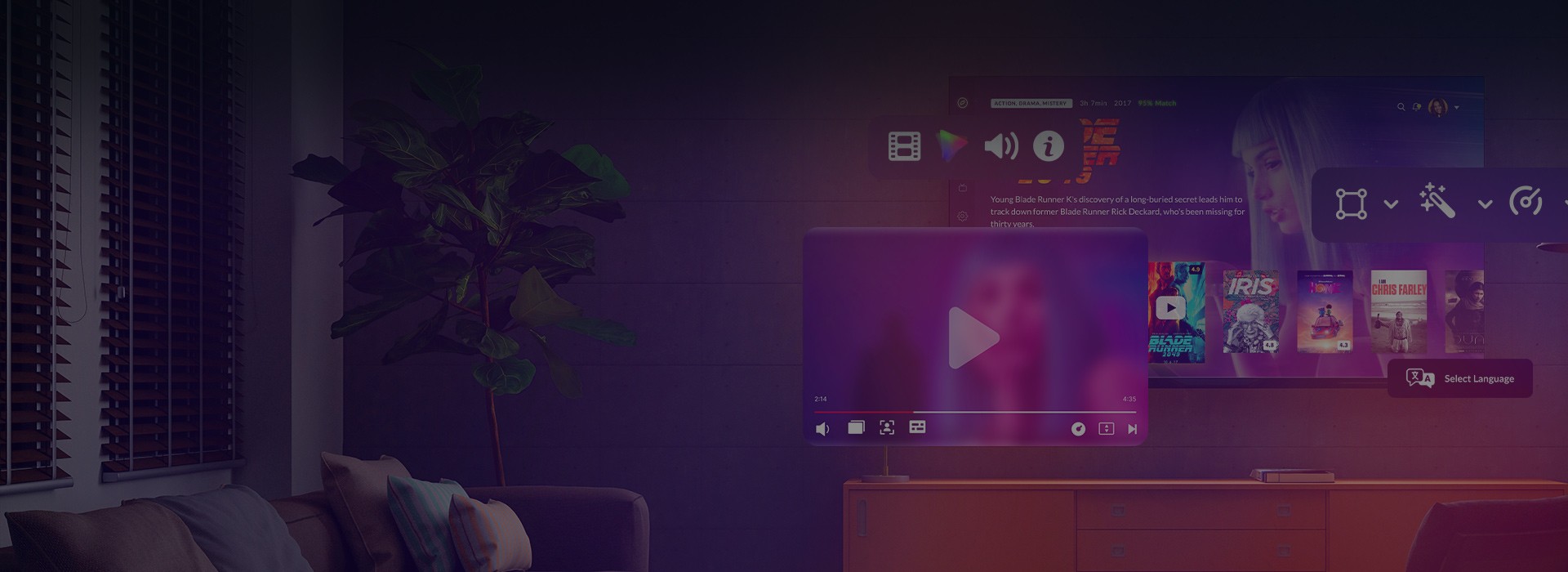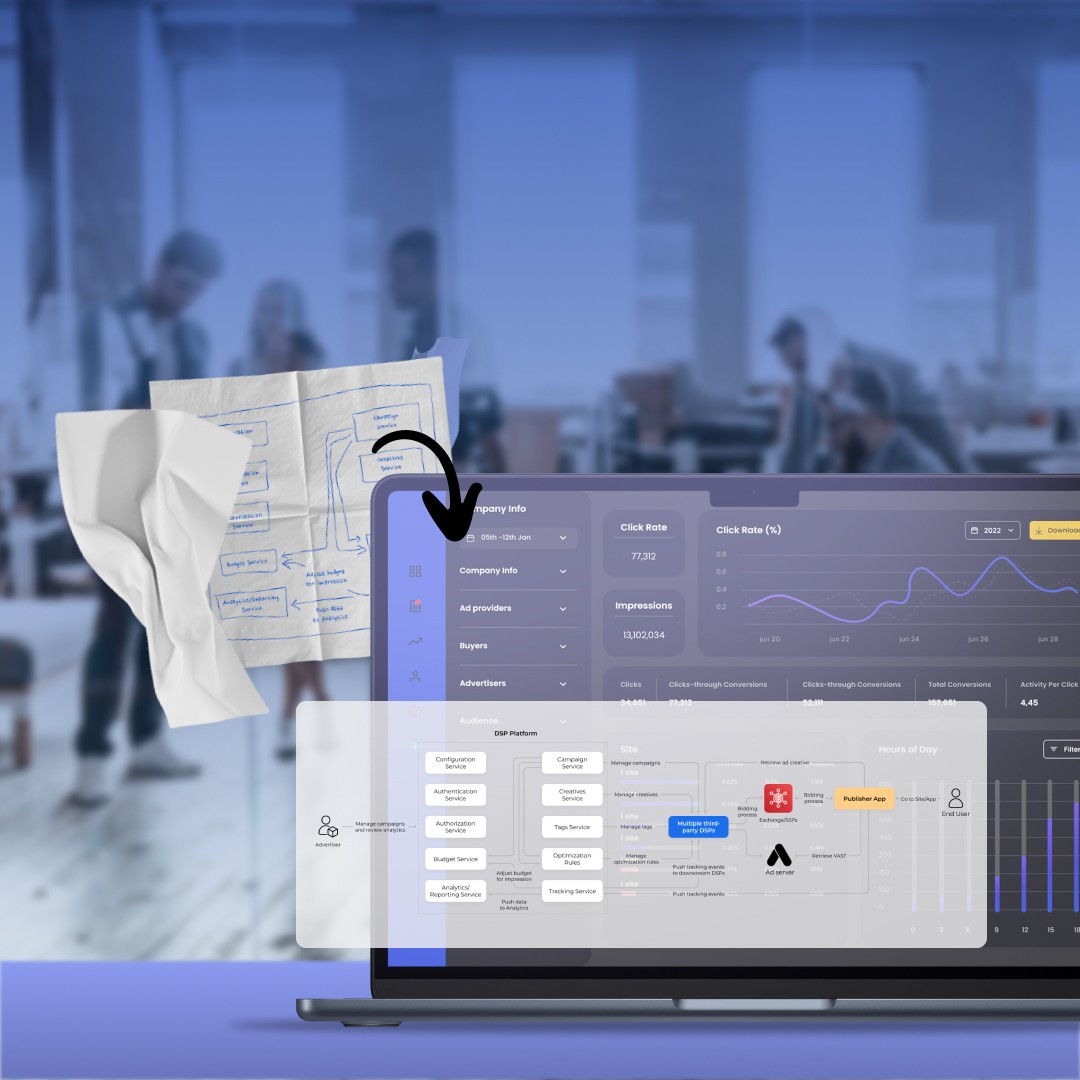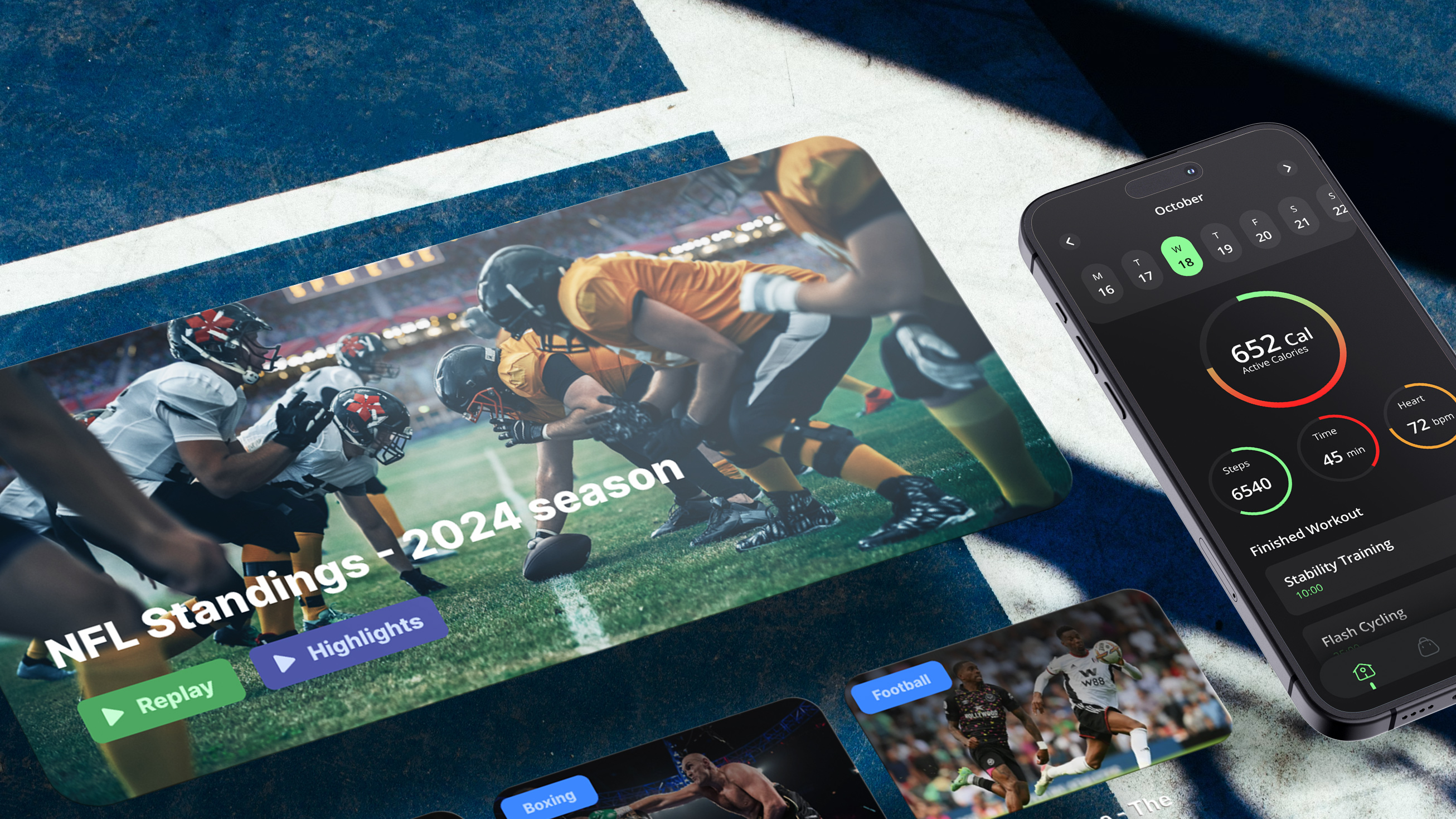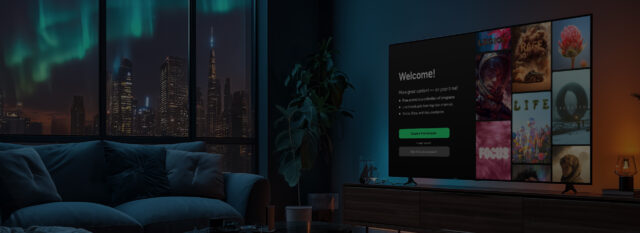For over 30 years, U.S. broadcasters stuck with the same digital broadcast standard — a system that once defined innovation but now struggles to keep up. Viewers, meanwhile, have changed completely. They expect choice, personalization, mobility, and they’re used to getting it.
From live news on a phone screen to binge-watching on Smart TVs, audiences have grown comfortable with platforms that think like they do. And they’re no longer waiting around for traditional TV to catch up.
So, what happens when your audience evolves, but your signal doesn’t?
That’s the question behind the rise of NextGen TV, the industry name for the latest evolution in broadcasting. Built on a new set of capabilities, ATSC 3.0 technology brings together the reach of over-the-air transmission with the intelligence of streaming, bridging two worlds that used to be miles apart.
But before we talk about how ATSC 3.0 works and what makes it so different, let’s rewind. This shift didn’t come out of nowhere. It’s part of a longer story — one that started decades ago and is now approaching a major turning point.
What is ATSC 3.0?
To understand where we’re going, it helps to know where we’ve been. For decades, ATSC 1.0 defined over-the-air television in the U.S. It marked the industry’s shift from analog to digital, brought us better picture quality, and allowed broadcasters to transmit multiple channels over a single frequency. At the time, it was a leap forward. But like any technology built for a different era, it began to show its age.
Then came streaming — on-demand, hyper-personalized, always a tap away. And suddenly, viewers weren’t just watching; they were choosing. On their phones, laptops, tablets.
Wherever and whenever it suited them. The structure of traditional TV started to feel rigid.
An upgrade was inevitable.
That upgrade arrived in the form of ATSC 3.0, also known as NextGen TV — a broadcast standard redesigned from the ground up to meet modern viewing habits. Unlike its predecessor, ATSC 3.0 uses Internet Protocol (IP) to deliver content, enabling seamless integration between broadcast and broadband, and laying the groundwork for interactive features, personalized experiences, and future-ready innovation.
In short, this is no incremental update. It’s a turning point.
ATSC 1.0 vs ATSC 3.0: what’s actually new?

Every broadcaster knows: changing standards is never just about specs. It’s about shifting expectations — from regulators, from partners, and most of all, from your audience.
So what makes ATSC 3.0 such a different beast compared to ATSC 1.0?
ATSC 1.0 vs ATSC 3.0: Then vs Now
| ATSC 1.0 | ATSC 3.0 |
| Signal architecture | One-way digital signal | 4K UHD, HDR, up to 120fps |
| Video quality | Up to 1080i, no HDR | IP-based hybrid delivery (broadcast + broadband) |
| Audio | Stereo or basic Dolby Digital | Dolby Atmos, Voice Plus, loudness leveling |
| Device compatibility | Only for fixed-location TVs with antennas | Smart TVs, mobile devices, in-car systems |
| Interactivity & UX | No interactivity | App-like menus, interactive overlays |
| Emergency alerts | Basic tones or text crawls | Real-time, geo-targeted multimedia alerts |
| Future readiness | Static standard, hard to upgrade | Modular, software-driven, future-ready |
The original ATSC 1.0 was designed in the ‘90s, and it shows. It delivered a one-way digital signal, intended for stationary TVs, with resolution capped at 1080i and audio in basic Dolby Digital. It couldn’t adapt to different devices or user behaviors. It simply played content — full stop.
ATSC 3.0, by contrast, speaks the language of today’s tech. Built on Internet Protocol (IP), it supports hybrid delivery: part over-the-air, part over-the-top. That means broadcasters can now pair their signal with internet-based features — interactive elements, on-demand content, personalization — while still using spectrum they control.
The difference in visual quality is just as stark. Where ATSC 1.0 offered decent HD for its time, ATSC 3.0 supports 4K resolution, High Dynamic Range, and up to 120 frames per second. The image feels alive — not just clear, but immersive. And it holds up across screens, whether that’s a living room TV or a smartphone on a moving train.
Sound has also evolved. Viewers no longer settle for flat audio. ATSC 3.0 introduces Dolby Atmos, delivering multidimensional surround sound with Voice Plus enhancements for dialogue clarity and automatic volume leveling — a welcome change for anyone who’s ever jumped at a loud commercial.
One more thing: ATSC 1.0 had no way to adapt. It was hardware-bound, inflexible, and difficult to evolve. ATSC 3.0, by design, is modular and software-friendly, which means it can grow alongside your strategy, adding new features, integrating with apps, and adjusting to how people actually watch content today.
So when we talk about ATSC 1.0 vs 3.0, we’re not just talking tech. We’re talking about the difference between broadcasting to the past and connecting with the present.
Ready to move beyond the comparison?
Understanding the difference is one thing. Turning it into a competitive advantage — that’s where it gets interesting.
Whether you’re rethinking your broadcasting UX/UI strategy, exploring new viewer experiences, or looking to prototype your first interactive broadcaster app, we can help you take that next step with clarity and confidence.
Explore our NextGen TV development services to see how we turn standards into standout experiences.
Why broadcasters are hesitating and why it’s still time to move
Let’s be honest, the industry is curious, but cautious. Everyone’s watching the progress of ATSC 3.0, but few are ready to sprint ahead without clear signals of ROI. And the hesitation makes sense.
Yes, the rollout is underway. Yes, the technology is here. Yes, there are plenty of reasons to enter the NextGen TV market. But in practice, broadcasters face two difficult unknowns:
- Receiver readiness: Not all TVs currently support ATSC 3.0. While adoption is rising, it’s still not a universal standard. Some manufacturers remain on the sidelines, and that leaves questions around true audience reach.
- Audience data: Without knowing how many viewers are equipped to receive NextGen TV, it’s hard to forecast the potential impact of investing in new apps, new features, and new UX models. Business cases need numbers, and as for now, those numbers are still forming.
If you’re in that wait-and-see camp, you’re not alone. Many broadcasters are doing the same — scanning the landscape, watching competitors, and weighing their options. But here’s the thing: the ones who move first are already winning.
Groups like Sinclair and Gray Media are no longer just testing. They’re rolling out ATSC 3.0 broadcasts with Dolby Atmos, HDR video, and interactive game content. Broadcaster apps like GameLoop are already live in dozens of markets, turning TVs into play hubs. HDR-enabled sports broadcasts are delighting viewers during prime-time events. And immersive news coverage in native HDR is becoming a new local differentiator1. This is what early leadership looks like.
Nearly all major broadcasters now harness the QBar App — a templated broadcaster application offering from Run3TV — as their foundation. Yet, a few, such as NBCUniversal, have journeyed beyond the standard path, crafting fully customized and uniquely interactive experiences that reflect their distinct brand identities and deepen audience engagement.
The abovementioned broadcasters aren’t just modernizing — they’re reshaping expectations. And if you’re waiting for the entire market to flip before making a move, remember: by then, it might be too late to lead.
The business value of being early
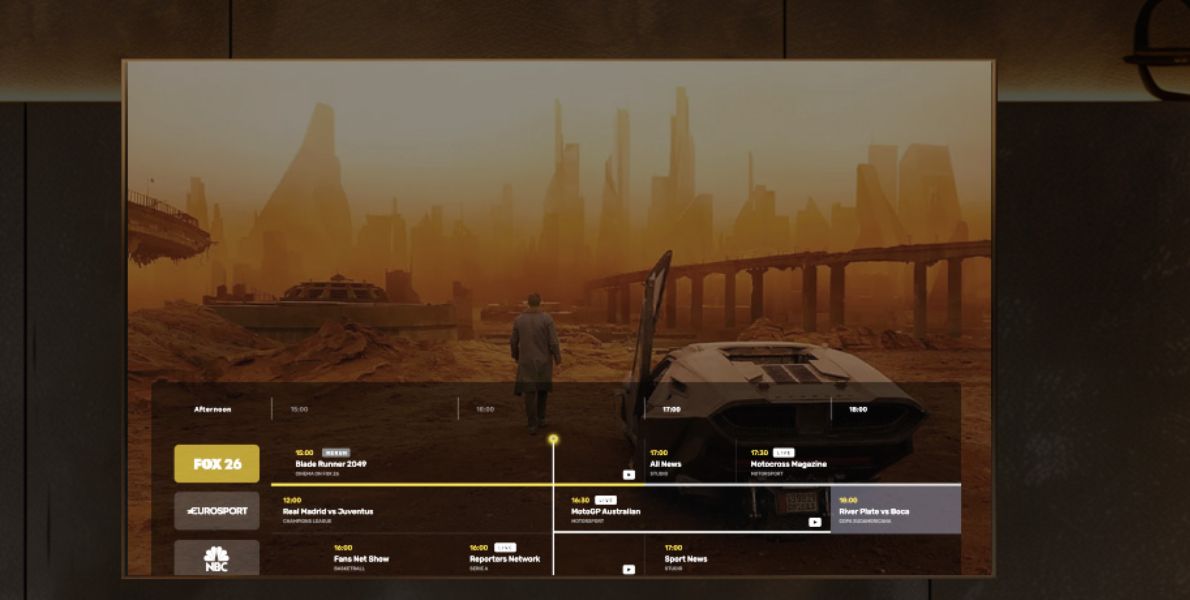
There’s a simple rule in media: the first to adapt tends to define the playing field. In the case of ATSC 3.0, that doesn’t just mean better quality — it means relevance. By embracing the standard early, you don’t just upgrade your infrastructure. You position yourself as a forward-thinking broadcaster capable of delivering:
- More interactive viewing opportunities
- Hybrid broadcast experiences, including live and VOD
- Multiple advertising options for higher monetization ROI
And most importantly, you stay visible to viewers who’ve grown used to Netflix-level experiences, even from local TV.
And let’s not forget about ATSC 3.0 benefits for viewers
What does ATSC 3.0 do? It closes the gap between broadcast and expectation. Viewers don’t care about specs. They don’t say, “wow, this must be IP-based delivery with HEVC encoding.” They just notice when something feels off when the picture is flat, the volume jumps, or there’s no way to restart the show they missed.
That’s the broadcast gap. And ATSC 3.0 doesn’t just patch it — it changes the rules.
- With 4K HDR visuals, shows finally look like they belong on the same screen as Netflix.
- With Dolby Atmos and Voice+, dialogue doesn’t drown in background noise.
- With geo-targeted alerts, local emergencies are actually local — not a ticker that makes you guess if it matters to you.
- And with hybrid broadcast + broadband delivery, viewers get live content with just enough interactivity to feel in control — like jumping back to the start of a game, or exploring extras on a second screen.
That’s what ATSC 3.0 does: it makes TV broadcasting feel like a product of this decade, not the last.
And for broadcasters? That means more relevance, more retention, and a real chance to reconnect with audiences who stopped expecting much from over-the-air a long time ago. Now they can expect more. You just have to be the one to deliver it.
You don’t have to figure it out alone
Let’s be clear: moving to ATSC 3.0 broadcast isn’t about flipping a switch. It’s a process. One that involves strategy, technology, partnerships, and a shift in how you think about your audience. But you don’t have to go it alone.
At Oxagile, we’ve been walking this road with broadcasters from the start — not as observers, but as builders. As a Run3TV anchor dev partner, we’re not just watching the front-end evolve — we’re designing it. From concept to implementation, from idea to interactivity.
We can help shape interfaces that run on real screens, in real homes — on ATSC 3.0 TVs that are already in the wild and quietly reshaping what viewers expect from over-the-air. They will be market-ready experiences that blend linear content with app-like functionality and unlock the true value of hybrid broadcast delivery.
Whether you’re launching your first ATSC 3.0-enabled app or rethinking how your signal connects with the new generation of devices, we’re here to help translate the standard into something that creates value.
Because let’s be honest: the technology is mature. The market is forming. And the moment for hesitation? It’s running out.
Asking the questions — about timing, scope, features, ROI?
We’re ready to talk. No pressure. Just a clear look at what’s possible.
Sources:
1. Pearl TV — NAB Show 2025 Highlights on ATSC 3.0 Expansion

